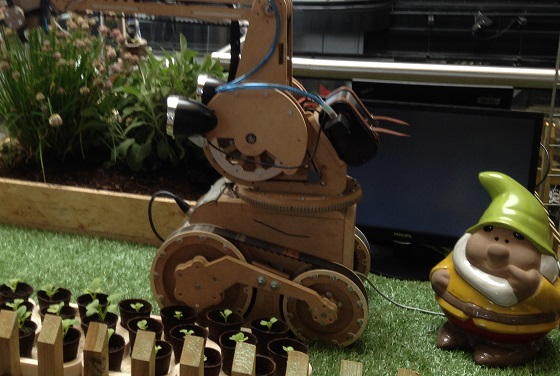
As Rexroth electric industrial motion control specialists, we work most often with manufacturers and printers. The motion control systems we work with are typically found in applications like textile printing, packaging, machine tools, and metal format. Most of the people we talk with are in factories.
Not coincidentally, that’s also the natural habitat, if you will, of most robots. Sure, you may have a robot vacuum cleaner or trashcan at home, but right now automation is mostly industrial.
This may change.
One of the areas that is the ripest for robotics, if you will overlook the pun, is agriculture.
Agriculture needs robots because, for one thing, people don’t want to pick vegetables or weed fields of flowers. Over the last decade, U.S. agriculture lost 20% of its workforce. At the same time, wages rose by 13%. Still, 90% of agricultural workers in California are foreign-born. In North Carolina, where some agricultural employers are required to prove that they have tried to hire natives before they may hire immigrants, the data shows that virtually no Americans are willing to take jobs like these. With tighter borders and tougher rules on immigration, U.S. agriculture is expecting things to get worse.
Automation could be the solution.
Working in fields of crops or in orchards also requires repetitive actions. Automation has pretty much replaced plowing, tilling, spraying, and hoeing on farms in the United States. Picking and weeding should go the same way.
The problem is, nature and robots don’t mix that well. Robots tend to fall down when they have to traverse uneven terrain. They have trouble figuring out what a piece of fruit looks like and how to grasp it, because pieces of fruit aren’t uniform enough for robots to identify. People can tell that those things in the picture below are all strawberries, even though they are different shapes and sizes. To a robot, they just don’t look the same.

The things that need to be done out in the fields are also fairly specialized. A new cherry picking robot being designed right now has to be able to grab a tree limb and shake it, which seems like a good job for a robot. But it has to grab limbs that have cherries on them, and it has to avoid grabbing and squishing the cherries themselves. Researchers are currently analyzing the task into multiple small tasks so they can program their robot to succeed at a task that is easy for a human but hard for a machine.
“What you’re going to see is people trying a lot of very specific things outdoors,” Wired magazine quotes agricultural robot expert John Binney as saying, “most of which aren’t going to end up being cost effective or reliable enough, but some of which work.”
Like so much R&D, the funding has to come from somewhere.
Meanwhile, back at the factory, you can call us any time for your Rexroth industrial motion control needs.
